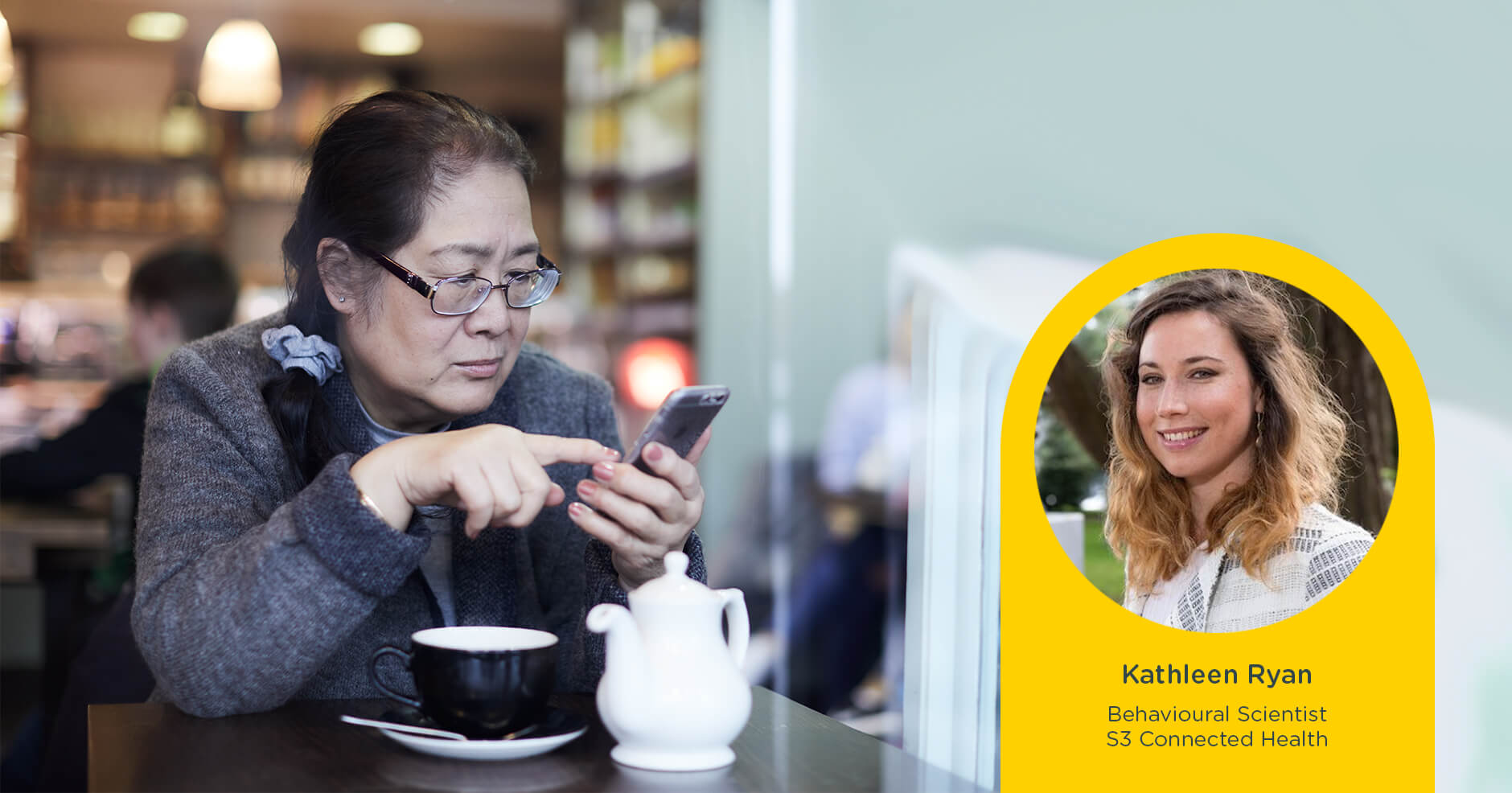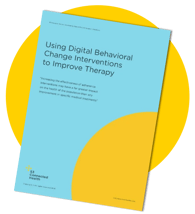At S3 Connected Health, we’re lucky to have some of the brightest minds in the business. Their vast range of expertise allows us to bring about the very best results for patients, clinicians, and our partners in the life sciences.
To start our series of employee spotlight blogs, we spoke to Kathleen Ryan, Behavioral Scientist at S3 Connected Health, to learn a bit more about what she does, and how behavioral science helps put patients right at the center of healthcare.
Hi Kathleen! Could you tell us a bit about your background, and how you got to be where you are?
Absolutely. I’ve been interested in health from a young age – both my parents come from a medical background – and so understanding and promoting health has always been really important to me.
I studied applied psychology at university in Cork, at which point I began to specialize into health psychology. I followed that up with a Masters in Health Psychology at NUI Galway, and, after spending time working on clinical trials and doing research in the area of public health promotion in both Europe and Australia, a PhD seemed like the natural next step.
The main focus of my PhD was how best to tailor information and support to individuals and promote weight loss, the best possible health outcomes, and specifically how to tailor digital interventions to make them more personally relevant and appropriate for the person who is receiving them.
While I now work full-time at S3 Connected Health, I still try to keep active in research and lecturing. I’m keen that my recommendations remain credible, and that I’m always up to date with the latest evidence and the newest concepts, and that these are reflected in my work.
My latest paper – on how health coaches use theory-based techniques in feedback during weight loss interventions – was published earlier this year.
That’s fascinating. So how did you come to work at S3 Connected Health, and what are your main responsibilities?
I was lucky enough to get a placement with S3 Connected Health during the course of my PhD, and then I returned to a full-time position after that!
I started out working with a multidisciplinary team to understand the health challenges involved in the area of diabetes and was keen to see how to apply theories of behavioral change and health promotion to reality in a way that helps as many people as possible.
My main role now is to apply a behavioral lens to patient journeys and advocate for a patient perspective: understanding what they go through, what their journey is like, what behaviors could be promoted, and what barriers need to be overcome.
It’s about being pragmatic. There's plenty of behaviour change theories, techniques and strategies out there but it's about understanding how to apply them in the most useful ways to meet the needs of the client, the patient, and the users.
How important is behavioral science in healthcare, and how does it help us serve patients better?
Let’s put it this way: many of the most common diseases we face in the world have behavioral aspects to them. A doctor may offer you pharmacological treatments, but they’ll also offer behavioral advice too: change your diet, stop smoking, exercise more, and so on. Asking patients to start a new medication regime or to use a medical device means asking them to take up a new behaviour, integrating a new habit into their day. If you really want to put the patient first, and support them at every stage of their disease journey, it’s important you factor these behavioral elements in.
But it’s not as simple as just asking people to do things, and they’ll do it. Behavioral change is immensely complex on an individual level, let alone when you take into account the wider factors which also influence our behavior.
So as behavioral scientists we try to discover the factors that influence change, and the barriers that prevent it, be it on an individual level, or society-wide. We anticipate challenges that the patient may have in enacting behaviour change in light of these influencing factors and it allows us to build solutions that account for these challenges.
And how do you actually go about creating solutions that meet patient needs?
When any client comes to us – either with an idea, or an existing solution – my job is to think about it from the user’s perspective.
That means analyzing the current patient journey for the condition they’re trying to treat, how and where the solution fits in, and then what the barriers to that treatment and core unmet needs are. We then draw on the experience of our wider multidisciplinary team and our research in order to provide evidence-based recommendations for overcoming these.
Patient research is absolutely fundamental to this process. You can read everything there is to read about different conditions and treatment approaches, but actually speaking to people who live with a given condition really brings it to life. Everyone is different, and will require a different level of support to manage their health.
That goes for healthcare providers, too. You could have the best app, based on the best research, with all the theories we know work to bring about change, but it won’t be used if you don’t consider who’s actually going to use it and what their circumstances are.
It all comes back to three key questions: how does the solution that we’re planning fit into a patient’s lived experience? How can we maximize the things that facilitate management? And how can we minimize barriers, or help patients overcome them?
Finally, it’s really important to consider and act on the behavioral aspects of solutions right from the very beginning; they can’t just be an afterthought. Even the most impressive digital solution won’t have an impact if how users will use the key features or elements is not thoroughly considered.
Finally, as someone who works right in the thick of it: what’s the future for digital health?
The global pandemic has transformed digital health from ‘nice to have’ to something of an essential. Health services all over the world have shifted to being delivered remotely – online and outside of hospital settings.
There’s a whole load of opportunities that come along with that. Understanding how to translate services and interventions to online settings presents unique challenges for patients and healthcare professionals.
Personalization tools are advancing all the time, for example, and have the potential to improve adherence and make clinicians’ jobs easier especially if they are planned, created and tested appropriately.
The wealth of data that is generated from these tools, plus sensors, medical devices and apps can be analyzed using a range of analytical approaches to derive meaningful insights for patients and improve care.
But while technology will always keep transforming and developing, it’s important we don’t get ahead of ourselves and get lost in what technology can do. At the end of the day, it has to come back to the most important thing: the patient. How is it actually going to help an individual navigate their day-to-day life with a chronic condition? That’s what really matters.
For more information on how digital behavior change interventions can help improve therapy adherence, download our whitepaper.



